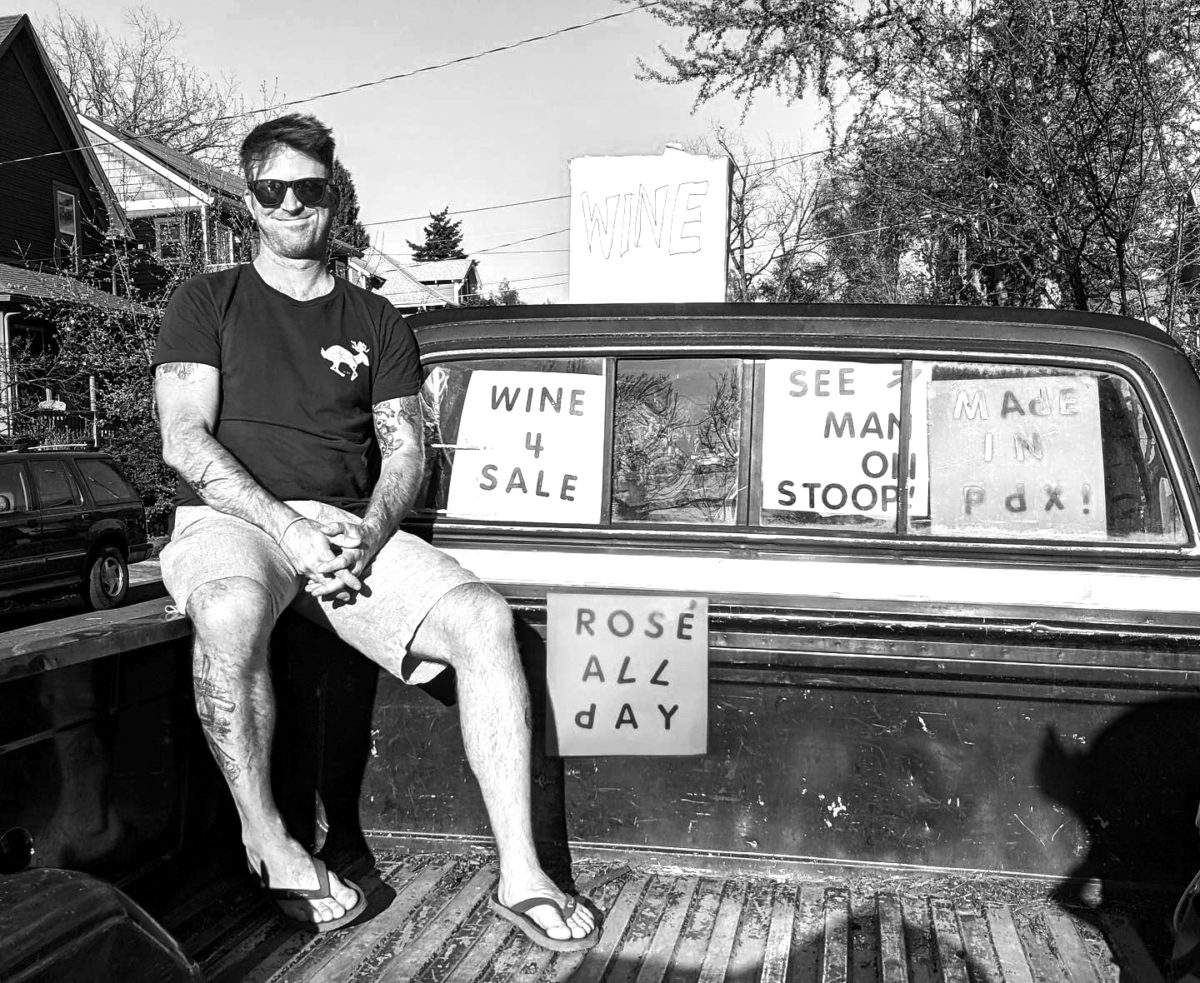Q&A with Corey Schuster
During the pandemic, you might have seen Corey Schuster selling wine out of the back of his pick-up truck on Taylor Street just east of the Sunnyside Environmental School. When we were all stuck at home — and some of us weren’t even venturing out to the grocery store, let alone to a wine shop — it was lovely to be able to buy a bottle of rosé on the street while taking an evening walk. Talk about buying local!
For the past decade, Schuster has been the sole winemaker at Jackalope Wine Cellars (jackalopewinecellars.com). He purchases grapes from farmers and makes his wine at the Portland Wine Company at Powell and SE 50th. To taste his wines (and those made by Love & Squalor winery) head there on Thursdays or Fridays from 4-8 p.m. or Saturdays and Sundays from 1-7 p.m. You can bring your own food and order a glass, a bottle, or do a tasting. He lives with his partner Candace Fallon, a biologist who works at the Xerces Society for Invertebrate Conservation.
How long have you been a winemaker?
Corey: This is my tenth vintage! You would think I’d do something about it. I spent a couple years working for different wineries, doing anything they put in front of me. I had a lot of opportunities to do work in tasting rooms, lab work, and events. When the Southeast Wine Collective opened in 2012, they hired me to run the bar. It felt like a safe place to start making wine so I jumped in.
When did you move to Sunnyside?
Corey: I moved to Portland in 2006 and have lived within a half mile radius — in Sunnyside — pretty much the entire time. The first place I lived was on Yamhill and 26th. Then I moved to 34th and Stark for a year. We’re now at 35th and Taylor and have been here since 2007.
Do you rent or own?
Corey: We’re renting. It’s an old house that was turned into a fourplex. Our landlords are awesome. We really love it here. Our location is pretty much perfect.
What do you love about Sunnyside?
Corey: I love all the amenities: restaurants, bars, and grocery stores. We have access to downtown and the highways to get out of town. It’s pretty great. And now that the winery is 1.5 miles away, work is also an easy commute.
What is one thing you’d like to see change about Sunnyside?
Corey: I love the piazza idea! [Floated by a Sunnyside board member at a recent meeting.] It’s not something this country does really well—having a central area. The center of Sunnyside—a place you can sit and hang out and greet the neighbors.
How is the harvest going?
Corey: The quality [of grapes] is looking good. Some of the vineyards I work with—their yields will be way down. Part of it was the heat, especially for vineyards that don’t irrigate. The grapes just don’t bulk up, which means really small clusters and small grapes. It’s just less fruit. The last time we did get rain was while flowering was happening—so the rain affected the fruit.
Schuster’s 2020 releases include a rosé, a carbonically macerated Merlot, a Pinot Noir, a Viognier, and a white Cabernet Franc. You can find them at New Seasons, Division Wines, Providore, and Whole Foods.
Follow Corey on Instagram or Twitter at @JackalopeCorey

